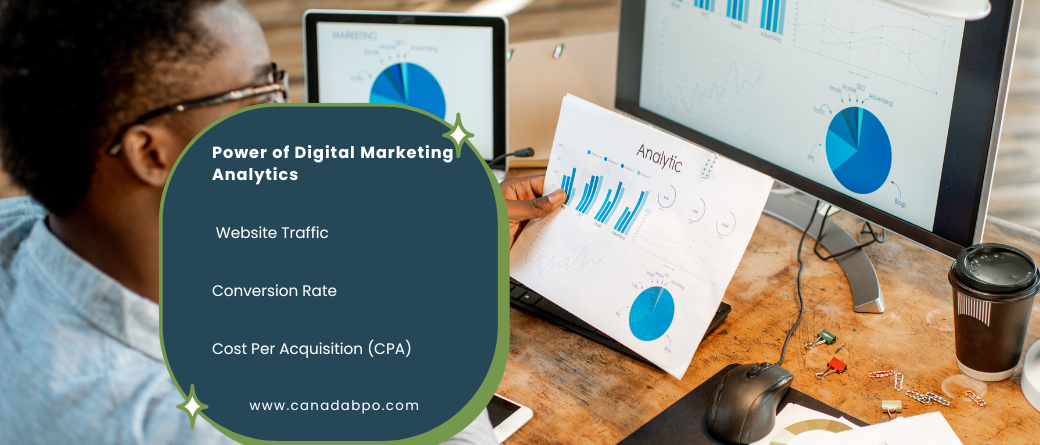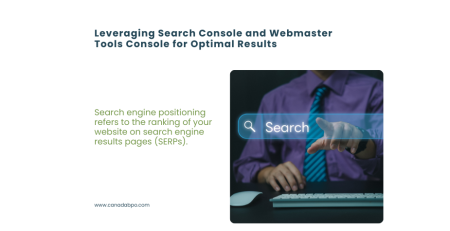Data is the fuel that drives successful strategies. Without the ability to track, measure, and analyze the effectiveness of campaigns, marketing efforts can quickly become guesswork. That’s where digital marketing analytics comes into play. By leveraging data, marketers can optimize their campaigns, understand customer behavior, and make data-driven decisions that lead to better outcomes.
In this post, we’ll dive into the importance of digital marketing analytics, the key metrics you should be tracking, and the best tools to help you master this essential skill.
What is Digital Marketing Analytics?
Digital marketing analytics refers to the collection, measurement, and analysis of data related to online marketing activities. It helps marketers understand the performance of their campaigns, customer behaviors, and trends that can inform future strategies.
By analyzing data from various digital channels such as websites, social media, email campaigns, and paid ads, businesses can:
- Identify what’s working and what’s not.
- Optimize ad spend and campaign efforts.
- Better understand their audience and customer journey.
- Improve overall marketing performance and ROI.
Why is Digital Marketing Analytics Important?
In today’s competitive online landscape, every marketing decision should be backed by data. Relying on intuition or guesswork can lead to wasted ad spend, missed opportunities, and inefficient campaigns. Here are several reasons why digital marketing analytics is so crucial:
- Data-Driven Decision Making: Analytics removes the guesswork from marketing decisions. With data, marketers can base their strategies on real insights rather than assumptions.
- Campaign Optimization: By continuously monitoring and analyzing performance, you can fine-tune your campaigns in real-time to improve results. For example, if an ad isn’t converting, you can identify the problem—whether it’s targeting, the creative, or the CTA—and make adjustments.
- Understanding Customer Behavior: Digital marketing analytics allows you to track how users interact with your website, emails, or ads. This helps you gain insights into their preferences, buying behaviors, and pain points, allowing you to tailor your marketing messages to meet their needs.
- Measuring ROI: With the right analytics tools, you can clearly see the return on investment (ROI) from each marketing activity. This ensures that you allocate your marketing budget effectively and focus on the tactics that generate the most revenue.
Key Metrics to Track in Digital Marketing Analytics
To effectively use digital marketing analytics, you need to know which metrics matter the most. Here are some of the key metrics every marketer should track:
1. Website Traffic
Website traffic is the foundation of digital marketing analytics. It measures the number of visitors coming to your site, where they are coming from (organic search, social media, email, paid ads), and how they interact with your content.
- Sessions: The total number of visits to your website.
- Pageviews: How many times a specific page on your site has been viewed.
- Bounce Rate: The percentage of visitors who leave your site after viewing only one page.
- Traffic Sources: Breakdown of where your website traffic is coming from (organic search, direct, referral, social media, or paid campaigns).
2. Conversion Rate
Your website’s conversion rate measures how well your site is turning visitors into leads or customers. This could be completing a purchase, filling out a form, subscribing to a newsletter, or downloading a resource.
- Goal Conversion Rate: The percentage of users who complete a specific goal, such as filling out a contact form.
- E-commerce Conversion Rate: The percentage of visitors who complete a purchase on your website.
3. Cost Per Acquisition (CPA)
CPA measures how much it costs to acquire a customer or lead through your marketing campaigns. It’s an essential metric for understanding the efficiency of your paid advertising efforts.
- Total Ad Spend ÷ Number of Conversions = CPA
4. Click-Through Rate (CTR)
CTR is the percentage of users who click on a link, ad, or email CTA out of the total number of users who view it. This metric is vital for evaluating the performance of your ads, email campaigns, and website CTAs.
- Number of Clicks ÷ Number of Impressions = CTR
5. Customer Lifetime Value (CLV)
CLV estimates the total revenue a business can expect from a customer throughout their relationship with the company. This metric helps marketers assess the long-term value of acquiring and retaining customers.
- Average Purchase Value x Average Purchase Frequency x Average Customer Lifespan = CLV
6. Return on Ad Spend (ROAS)
ROAS measures the effectiveness of your advertising campaigns by comparing the revenue generated from ads to the amount spent.
- Revenue from Ads ÷ Cost of Ads = ROAS
7. Email Marketing Metrics
Email marketing is still one of the highest-performing channels, but you need to track specific metrics to measure its success:
- Open Rate: The percentage of recipients who opened your email.
- Click-Through Rate: The percentage of recipients who clicked on a link in your email.
- Unsubscribe Rate: The percentage of recipients who unsubscribed after receiving your email.
8. Social Media Engagement
Social media platforms offer robust analytics that show how users are interacting with your posts, ads, and page overall.
- Engagement Rate: The percentage of users who engage (like, comment, share) with your content.
- Follower Growth: The increase or decrease in followers over time.
- Reach and Impressions: Reach refers to the number of unique users who see your content, while impressions are the total number of times your content is displayed.
Top Tools for Digital Marketing Analytics
To track all of these metrics, you’ll need powerful analytics tools that can gather, analyze, and visualize data from multiple sources. Here are some of the best tools for mastering digital marketing analytics:
1. Google Analytics
Google Analytics is a free tool that provides in-depth insights into your website traffic, user behavior, and conversion data. It allows you to track goals, analyze traffic sources, and measure the success of your digital marketing campaigns.
2. Google Ads
For tracking the performance of your PPC campaigns, Google Ads provides detailed insights into clicks, conversions, cost per click, and more. You can also set up conversion tracking to measure the ROI of your campaigns.
3. HubSpot
HubSpot’s all-in-one marketing platform includes built-in analytics tools that track website performance, email marketing, social media, and lead generation. It offers powerful reporting features and integrates with your CRM for tracking the customer journey.
4. Hootsuite
Hootsuite is a social media management tool that includes analytics and reporting features. It allows you to track engagement, follower growth, and performance across multiple social platforms in one place.
5. Moz or SEMrush
Both Moz and SEMrush provide comprehensive SEO analytics. They help you track keyword rankings, monitor backlink performance, and identify technical SEO issues that could affect your site’s search engine rankings.
6. MailChimp
For email marketing analytics, MailChimp offers tools to measure open rates, click-through rates, and conversion rates from your email campaigns. It also provides insights into audience behavior and segmentation.
How to Use Digital Marketing Analytics for Campaign Optimization
Once you’ve gathered data from your digital marketing efforts, it’s time to put it to use. Here’s how you can leverage analytics for better campaign results:
- Identify Weak Points: Use analytics to pinpoint areas of your campaigns that aren’t performing well, such as low CTRs, high bounce rates, or poor conversion rates. This data helps you identify what needs to be improved.
- A/B Testing: Run A/B tests on different elements of your campaigns, such as headlines, CTAs, or landing pages, to see which version performs better. Use the data to make informed adjustments.
- Audience Insights: Analytics tools provide detailed information about your audience’s demographics, behaviors, and preferences. Use these insights to refine your targeting and messaging.
- Real-Time Monitoring: Digital marketing analytics tools allow you to track performance in real time. If a campaign isn’t delivering results, you can pause it, adjust it, and relaunch it without losing significant ad spend.
- Track ROI and Adjust Budgets: By analyzing metrics like CPA, ROAS, and CLV, you can determine which channels are delivering the best ROI. Allocate more budget to high-performing channels and scale back on those that aren’t as effective.
Mastering Digital Marketing Analytics for Success
In the ever-evolving world of digital marketing, data is your most valuable asset. By leveraging digital marketing analytics, you gain deep insights into your audience, optimize your campaigns, and make data-driven decisions that maximize your marketing efforts.
Remember, success in digital marketing comes from continuously tracking, analyzing, and refining your strategies based on the data at hand. With the right tools and a solid understanding of key metrics, you can transform your marketing campaigns into powerful growth engines for your business.
Need help analyzing your digital marketing data? At Canada BPO Services, we provide expert analytics and digital marketing solutions tailored to your business goals. Contact us today for a free consultation!










